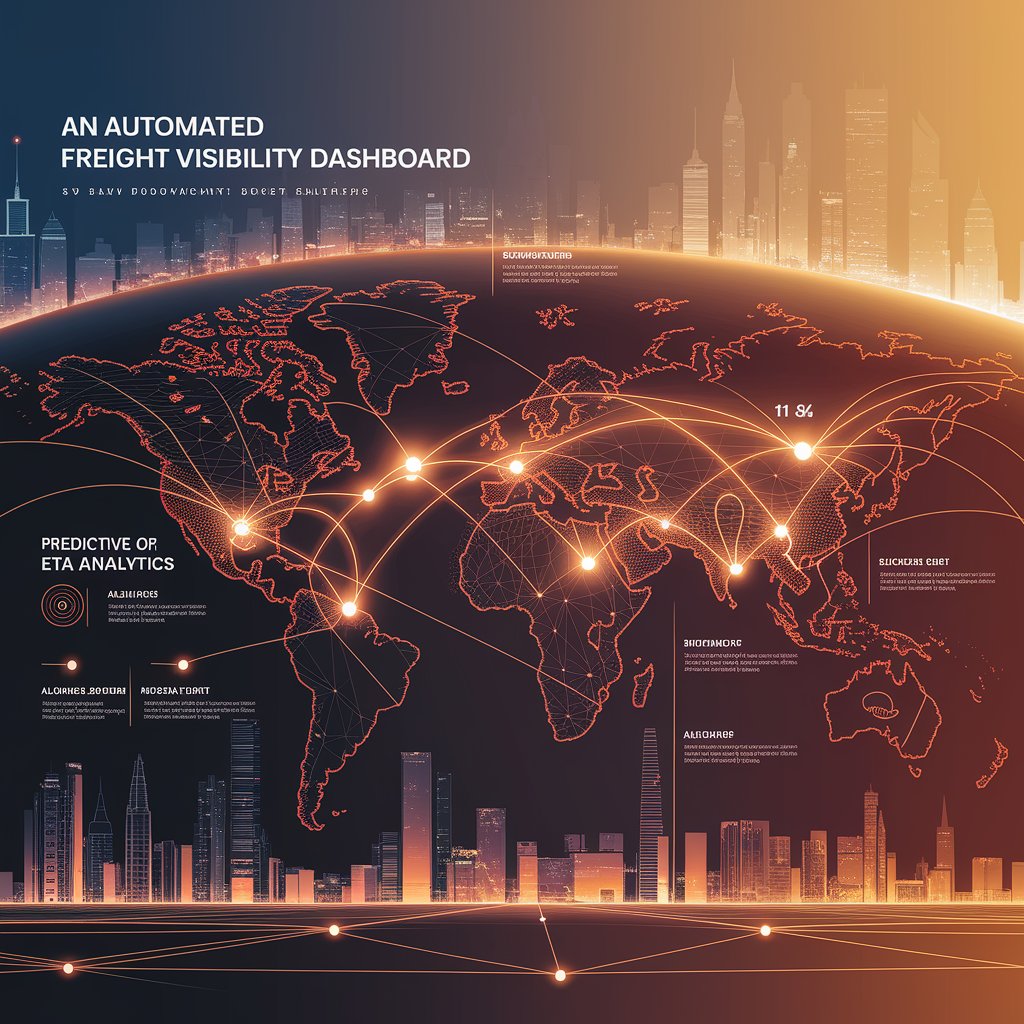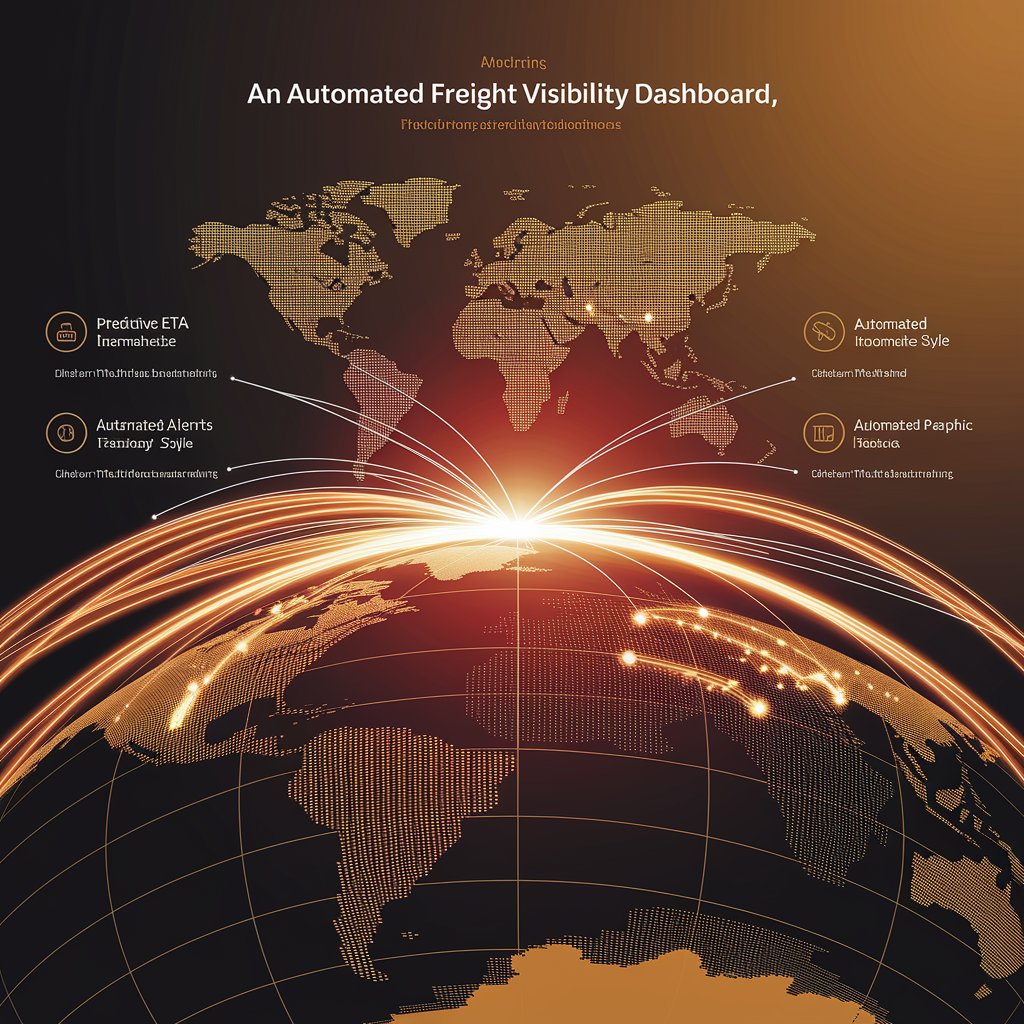Automated Freight Visibility: Real-Time Logistics Intelligence Without the Manual Work

Introduction
Linbis changes that with automated freight visibility, an AI-driven system that connects every shipment, carrier, and customer in one unified view.
It eliminates blind spots, reduces manual intervention, and transforms tracking into a proactive, automated process that runs 24/7.
Step 1: End-to-End Data Integration
The foundation of Linbis freight visibility starts with integration across all logistics systems:
- TMS, WMS, and ERP systems synchronized for consistent data flow.
- Carrier APIs providing live location and status updates.
- IoT sensors and GPS devices tracking conditions and movements.
- Customs and port data feeds to capture clearance progress.
This creates a single, reliable source of truth where every shipment event is captured automatically — no manual entry required.
Step 2: AI-Driven Shipment Tracking
Linbis uses AI to monitor shipments in real time and predict future events before they occur:
- Forecasts ETAs dynamically based on traffic, weather, or delays.
- Detects anomalies in route progress or sensor data.
- Flags potential delivery risks and suggests alternate routes.
- Updates status automatically as milestones are reached.
Instead of tracking reactively, Linbis anticipates — turning visibility into predictive logistics intelligence.
Step 3: Automated Alerts and Notifications
Forget about endless status emails and phone calls.
Linbis automates communication for internal teams and customers:
- Sends instant notifications when shipments depart, arrive, or encounter issues.
- Automatically alerts operations managers about exceptions or delays.
- Notifies customers with branded tracking updates in real time.
- Supports multi-channel alerts (email, SMS, or portal).
Automation ensures no shipment is ever left unmonitored — and no customer is ever left uninformed.

Step 4: Unified Visibility Dashboard
Linbis offers a powerful freight visibility dashboard that visualizes the entire logistics network:
- Global map view of all active shipments.
- Color-coded status indicators for in-transit, delayed, or delivered cargo.
- Performance KPIs such as on-time delivery rates and dwell times.
- Custom filters by carrier, mode, or region.
Every stakeholder — from operations to clients — can monitor the full supply chain in real time through a single, easy-to-use interface.
Step 5: Predictive and Prescriptive Analytics
Linbis takes visibility a step further by combining AI with analytics to forecast outcomes and recommend actions:
- Predicts delays before they affect deliveries.
- Identifies bottlenecks in specific trade lanes or carriers.
- Recommends optimal alternatives for rerouting or rescheduling.
- Quantifies impact on costs, KPIs, and customer service.
This gives logistics teams not just visibility — but actionable intelligence to stay ahead of disruptions.
Step 6: Workflow Automation
Visibility doesn’t stop at data — it drives automation across operations:
- Triggers invoicing automatically once deliveries are confirmed.
- Updates CRM records when shipments reach destinations.
- Generates compliance and audit reports for each transaction.
- Notifies carriers for automatic follow-ups or claims processing.
Linbis transforms visibility into a closed-loop automation ecosystem, where every event triggers an intelligent workflow.

Advanced Features
- AI-based predictive tracking.
- Automated shipment updates and alerts.
- Unified visibility dashboard with real-time KPIs.
- Cross-platform integration (ERP, CRM, WMS, TMS).
- Continuous learning for better accuracy and resilience.
Real-World Example 🚛
A North American logistics provider implemented Linbis automated freight visibility to manage over 3,000 weekly shipments.
After 4 months:
- Manual tracking emails reduced by 85%.
- ETA accuracy improved by 34%.
- Customer satisfaction scores increased by 27%.
They now operate with total transparency — and zero manual follow-up.

Benefits 📈
- Visibility: Track all shipments in real time.
- Automation: Eliminate manual tracking and updates.
- Predictability: Anticipate delays before they occur.
- Efficiency: Optimize communication and workflows.
- Customer Experience: Deliver transparency and trust.
Conclusion
With automated freight visibility, Linbis gives logistics providers the control and confidence to manage complex operations effortlessly.
By integrating AI, real-time tracking, and workflow automation, Linbis transforms freight visibility from a passive report into a proactive command center for logistics intelligence.
In the new era of logistics, visibility isn’t optional — it’s automated.
